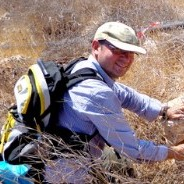Ecology and Conservation of Small Mammals: Exploring Biodiversity, Climate Resilience, and Ecosystem Dynamics through Small Mammal Monitoring and Research
A special issue of Life (ISSN 2075-1729). This special issue belongs to the section "Diversity and Ecology".
Deadline for manuscript submissions: closed (30 April 2024) | Viewed by 4062
Special Issue Editors
Interests: wildlife ecology and biology; small mammals; raptor ecology and biology; biodiversity; multivariate statistics; agricultural ecosystems; avifauna; wildlife management
Interests: recording and monitoring of the biodiversity of vertebrates, focusing on small mammals; protection and conservation of endemic, rare and threatened mammals of the Greek fauna; faunistic studies, based on diet analysis (owl pellets, fecal matter, etc.); study of phylogenetic relationships, with the use of chromosomal and other approaches; protection and sustainable management of protected areas of Greece
Special Issue Information
Dear Colleagues,
Small mammals play critical roles in ecological systems, occupying diverse niches and contributing to ecosystem functioning. They are highly abundant in all ecosystems and assume multiple roles. For instance, they can serve as secondary consumers on plant communities to the extent of becoming pests in agriculture, they comprise a primary food source for a large range of predators, and they function as pathogen transmitters. Through long-term research of small mammal communities and the study of their diversity, abundance, community assembly and interactions, important insights can be generated with respect to ecological processes and mechanisms in nature. Small mammals constitute an ideal animal group to explore critical research questions, which include how they respond to climate change, how they react to land use changes and habitat transformation, and how they adapt to but also shape ecosystem processes. Addressing these questions can also shed light on how small mammals adjust their ecological and population dynamics, their community structure, intra and interspecific competition, in reaction to a continuously changing landscape and environment.
This Special Issue aims to broaden the understanding of small mammal ecology by approaching them as biodiversity indicators, factors and indicators of climate resilience in ecosystems, and essential links of ecosystem dynamics. We invite contributions that delve into these ecological aspects of small mammals, encompassing not only monitoring efforts but also broader ecological approaches.
Topics of interest include, but are not limited to:
- Biodiversity and community ecology of small mammals in different ecosystems, ranging from natural habitats to anthropogenic landscapes.
- Assessing the responses of small mammals to climate change, including shifts in distribution patterns, phenology, and population dynamics.
- Investigating the ecological impacts of small mammals as seed dispersers, pollinators, and predators in diverse ecological networks.
- Understanding the role of small mammals in shaping ecosystem processes, such as nutrient cycling, vegetation dynamics, and trophic interactions.
- Examining the effects of land use change and habitat fragmentation on small mammal communities and their ecological functions.
- Exploring the mechanisms underlying small mammal adaptation and resilience to environmental stressors, including both abiotic and biotic factors.
- Integrating technological advances, such as molecular techniques and remote sensing, in the study of small mammal ecology and conservation.
By encompassing these ecological dimensions, this Special Issue seeks to emphasize the significance of small mammals as indicators of ecosystem health, drivers of ecological processes, and potential targets for conservation strategies. We encourage researchers to contribute original research, review articles, and case studies that advance our understanding of the ecological complexities surrounding small mammal communities and their conservation in the face of ongoing environmental changes.
Dr. Vasileios A. Bontzorlos
Dr. George P. Mitsainas
Guest Editors
Manuscript Submission Information
Manuscripts should be submitted online at www.mdpi.com by registering and logging in to this website. Once you are registered, click here to go to the submission form. Manuscripts can be submitted until the deadline. All submissions that pass pre-check are peer-reviewed. Accepted papers will be published continuously in the journal (as soon as accepted) and will be listed together on the special issue website. Research articles, review articles as well as short communications are invited. For planned papers, a title and short abstract (about 100 words) can be sent to the Editorial Office for announcement on this website.
Submitted manuscripts should not have been published previously, nor be under consideration for publication elsewhere (except conference proceedings papers). All manuscripts are thoroughly refereed through a single-blind peer-review process. A guide for authors and other relevant information for submission of manuscripts is available on the Instructions for Authors page. Life is an international peer-reviewed open access monthly journal published by MDPI.
Please visit the Instructions for Authors page before submitting a manuscript. The Article Processing Charge (APC) for publication in this open access journal is 2600 CHF (Swiss Francs). Submitted papers should be well formatted and use good English. Authors may use MDPI's English editing service prior to publication or during author revisions.
Keywords
- small mammals
- biodiversity, indicators
- monitoring
- assessment
- communities







